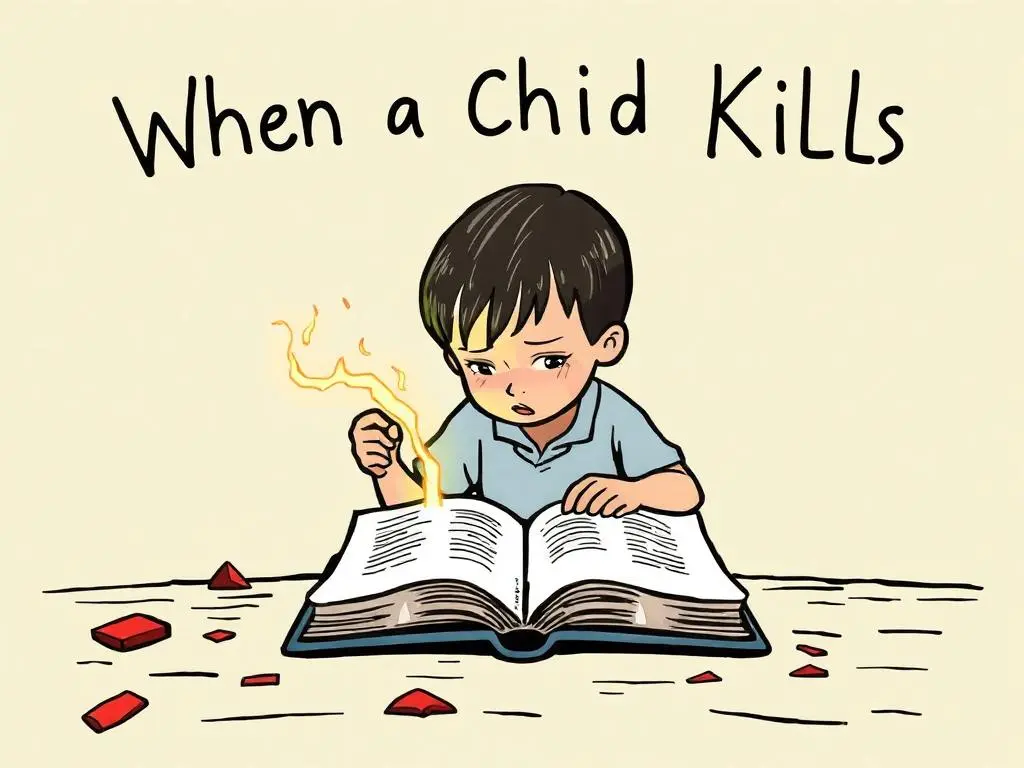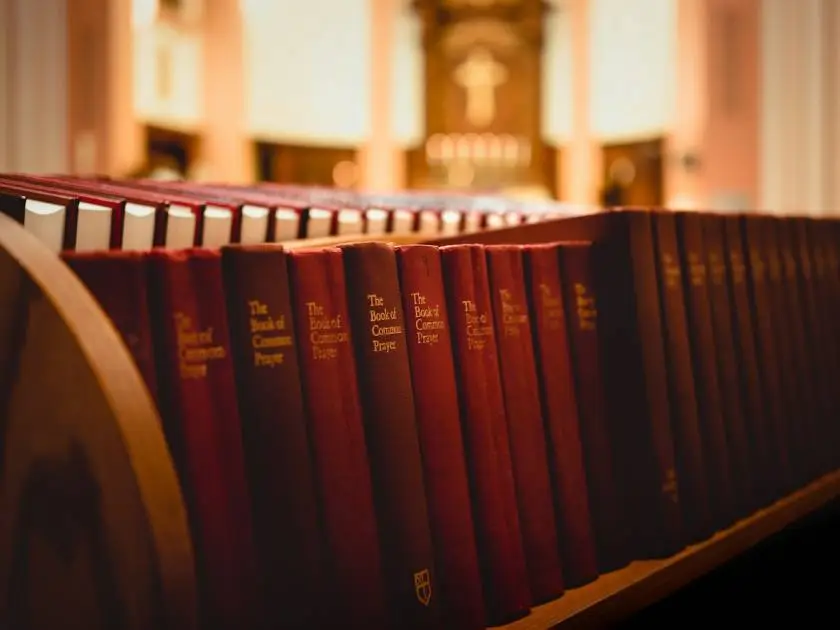Man of My Time, by Dalia Sofer: An Excerpt
Three
By the time of my arrival, in the summer of 1960, my father had been at work on his encyclopedia for nearly a decade. If I had to associate a smell with childhood, it would be the scent of buckram and paper—not the innocuous kind found in stationers, but from moldy manuscripts piled up in every corner of his office, the largest room in our small apartment on Pahlavi Street. My mother, who still only half-jokingly called herself Monir Farahani Ed Dowleh—this last obsolete suffix a reference to her supposed aristocratic heritage—endured his mania with the pragmatism of a jockey putting up with her thoroughbred’s quirks. Though she claimed she was from old money, she had reconciled herself to the fact that having married an academic, the best she could now hope for was not wealth, but recognition from the band of university highbrows she couldn’t tolerate. Her father, Ardeshir Khan Farahani, a man with a Shah Abbas–style mustache who was our family’s supplier of French porcelain, had cut off all financial support, as he had never cared much for his impractical son-in-law likening him to Don Quixote and calling him “Don Mozaffarian, man of Shatt al-Arab.” This moniker, a reference to the circumstances of my father’s birth, was an unconcealed attempt to estrange him: my father had been born two weeks early on a ferry crossing the contested river named “Shatt al-Arab” by our Arab neighbors and “Arvand Roud” by us. The exact spot of the birth, as the ferryman later described it, was past the juncture with the Karun but before the fork of the Tigris and the Euphrates, leaving my grandparents, who in those days lived in my grandmother’s province of Khuzestan, with a harrowing story and a stateless baby. And even though the matter was eventually resolved and a birth certificate was issued, my father, throughout his life, was branded with a fishy provenance teetering on the border of an Arab land.
To all appearances my father ignored my mother’s peacockish family and labored on his encyclopedia with the precision of a scribe, becoming, over the years, the mythical simorgh toward whom art history disciples, like Attar’s fabled birds, made their pilgrimage. In 1972, four years into his stint at the Ministry of Culture, he received an endowment from the government. He expanded his study to the apartment above ours and hired three scholars who showed up with their Samsonite briefcases every morning at seven o’clock with the fidelity of the three magi bearing gifts. I had nicknames for all three: the bumbling Frenchman with a penchant for Pierre Cardin trench coats became “Monsieur Hulot,” the stout Englishman with the bulbous nose was the “Earl of Sandwich,” and the Persian reputed to be a genius who consumed copious amounts of marzipan became “Yasser Maghz-Pahn—big-brained Yasser.”
[ Return to the review of “Man of My Time.” ]
Seven years later, when everything came to an end, M. Hulot and the Earl packed up and returned to their respective homes, but Yasser Maghz-Pahn, who maybe wasn’t such a genius after all, decided to remain because, he said, he had been only a scholar and had committed no crime. He must have forgotten that before becoming my father’s minion he had for years been a critic denigrating the artists of the Saqqākhāneh school, who integrated in their works local motifs from mythical lore, religious symbols, or objects found in the bazaars—amulets, zodiac signs, astrolabes, and even the lowly āftābeh—the toilet ewer. “Marcel Duchamp,” the eminent Yasser had written in 1964 following the Fourth Tehran Biennial, “born in the land of Molière, Montesquieu, and Voltaire, could permit himself to proclaim a urinal as art, but we, already regarded as Hajji Babas on flying carpets, can hardly afford to do so. I suggest we let the toilet ewer do what it was designed to do: wash our behinds.” The poor fool is buried in Behesht-e Zahra cemetery, in an unmarked grave not far from the old prime minister Amir Abbas Hoveyda’s.
Four
Looking at me now, one wouldn’t guess that I started out in this world as the kind of boy who would crouch in a corner of the kitchen, softly biting into a cookie and catching crumbs in my cupped hand. That I arranged my colored pencils according to shade—light to dark—and my books according to size, the spines aligned and facing the same direction like a field of sunflowers. That going to sleep I counted to ten to keep death at bay, and upon waking each morning I placed one hand on my heart to make sure it was still beating and the other on my penis to make sure it was still there, a habit that earned me a few slaps from my mother.
From my earliest years, I was in love with glass. I had a collection of nineteenth-century sulfide marbles—transparent globes with porcelain figures inside. My father would help me send for them from Germany through one of his art magazines. My favorite marble, the one that contained a milky snow owl, was, according to my perfectionist father, faulty, because the owl was cracked. This defect didn’t bother me; it only made me love that marble more. When one afternoon after school the marble went missing, I searched frantically, first in the vicinity of the crystal ashtray on the coffee table—where I had left it—then inside drawers and under furniture and even behind the toilet, where I discovered a ladybug, dying.
At the dinner table that evening my father confessed that having found the marble in the crease of the sofa the previous night, he had thrown it out. “The thing was broken,” he said, serving me a second helping of the eggplant stew that I had eaten under duress the first time around. I shook my head no, but my voice wouldn’t come. The memory of my chipped snow owl, now gone, made me cry with an intensity that embarrassed me. My father reached over his plate and handed me his monogrammed handkerchief. He promised to order more marbles from the magazine.
“Remember, dear boy, harmony!” he said afterward. “Without it things collapse.” He explained that to make those sulfide marbles a glassblower would heat the tiny figure at the same temperature as the molten glass globe that would encase it; even the slightest difference in temperature would cause either the marble to shatter or the figurine to crack.
I longed for harmony but didn’t believe in it. The world had presented me with too much incongruity: my father, the hermetic scholar, versus my mother, the unfulfilled socialite; my devotion to a prayer stone my uncle Majid had given me shortly before he died in a car accident, versus the stone’s complete in-difference to me; the uninterrupted presence in my mind of the vanished uncle Majid, of whom I remembered only his knowing smile and his black bowler hat; and the fact that pleasant things, like the smell of burnt sugar, sometimes made me cry.
In glass I found my own deliverance. I saved used bottles and arranged them like soldiers on the bathroom windowsill, where they would catch the afternoon light and refract it back on the floor as dancing shadows. That they had once contained such remedies as pennyroyal and rosewater and marjoram pacified me. The bottles, I believed, protected me from the world.
[ Return to the review of “Man of My Time.” ]
I loved glass because it didn’t want to be defined. Was it solid molten earth or a liquid that moved so slowly that it seemed not to move at all, like the earth itself? I loved it, too, because through it I learned to see—the world appearing to me not as a smooth continuum but as a series of erratic shapes, reflected and refracted, changing color according to the time of day or the light in the sky. And I knew, besides, the heartbreak everyone experienced at the sound of shattering glass. A chipped pitcher, a splintered breakfast bowl, a shattered mirror—no other broken thing triggered such sorrow.
My father, believing that I was exhibiting the characteristics of glass, offered me a book, John Amos Comenius’s Orbis Pictus—a children’s pictorial encyclopedia from the seventeenth century—which he hoped would inject me with a dose of reality and make me more solid, less translucent. The full title was Visible World, or a Nomenclature, and Pictures, of All the Chief Things That Are in the World, and of Men’s Employments Therein. It was, said my father, the forebear to all subsequent children’s picture books, and pulling it out of his suitcase after a business trip to London, he placed it in my hand with the reverence one may devote to a prayer book. “Take good care of it,” he said, and kissed my forehead. Thinking that we might be performing some kind of religious ritual and hoping to live up to the moment’s gravity, I brought the book to my lips and kissed it. My father watched me for what felt like a very long time. “What is this nonsense?” he said, as he poured himself a glass of Cointreau. “Sentimentality, as Oscar Wilde observed, belongs to one who wishes to have the luxury of emotion without paying for it.”
That a book could contain the “visible world” seemed to me like an undeliverable promise. And soon I found that like all things in the visible world, this book could not fulfill its pledge: already in the second chapter there was a discussion of God, the most absent of all absentees, described as “a Light inaccessible . . . Everywhere and nowhere.” The accompanying drawing was nothing like the paintings of the white-bearded old men of Michelangelo and Benvenuto Tisi printed in my father’s reference books, but a sun with a triangle inside, along with letters in some undecipherable, extinct language. After an initial sense of betrayal, during which I convinced myself that I had been the victim of an inexcusable lie, I gradually came to admire the book’s lapse. Allowing the absent to enter the tyrannical assembly of the present was a silent concession by the author that the dead are not very far away, and it assured me that my own marble, with its snow owl cracked since birth, remained, despite my father’s casual murder of it, somewhere in this world.
After much deliberation I accepted John Comenius as one undertakes a new friendship. For many afternoons I sat fully clothed in the bathtub under the bottles and read his book, cover to cover, discovering its catalog of a seventeenth-century world, which had remained largely unchanged from my own—fire, air, clouds, water, earth, metals, stones, trees, flowers, corn, shrubs, singing birds, ravenous birds, water fowl, laboring beasts, wild beasts, serpents and creeping things, sea fish and shell fish, the outward parts of man, the head and the hand, the flesh and the bowels, the channels and bones, the outward and inward senses, the soul of man, husbandry, the making of honey, bread baking, fishing, fowling, butchery, cookery, the shoemaker, the carpenter, the mason, a house, a mine, the blacksmith, the traveler, the horseman, carriages, passing over waters, swimming, shipwreck, writing, paper, the book binder, a book, a school, geometry, the aspects of the planets, moral philosophy, prudence, diligence, temperance, fortitude, patience, humanity, justice, liberality, the tree of consanguinity, a city, judgment, the tormenting of malefactors, a burial, a stage play, the kingdom and the region, the army and the fight, the besieging of the city, religion, the last judgment, the close.
I didn’t initially grasp that the book was in Old English, and for weeks afterward I recited my favorite passage, which I dutifully memorized in my very poor English, to anyone who would listen, never understanding why it garnered so many laughs from the adults—namely my parents and my father’s associates from the Ministry—whom I had hoped to impress rather than amuse. The passage, which I still remember, was in the section describing man, and went as follows:
The inward Senses are Three:
The Common Sense, (under the forepart of the head),
apprehendeth things taken from the outward Senses.
The Phantasie, under the crown of the head judgeth of
those things, thinketh and dreameth,
The Memory, under the hinder part of the head, layeth
up every thing and fetcheth them out: it loseth some, and
this is forgetfulness.
Sleep is the rest of the Senses.
•
To prove to myself the existence of the world I followed the book’s example and began to draw. I drew my father’s eyeglasses, my mother’s faux fur coat, my grandfather’s imperial mustache. I drew the chipped porcelain Harlequin on the piano and the tarnished silver samovar in the kitchen. I drew winter coats hanging limp on the rack by the front door and hollow gloves stacked palms up on the console in the foyer, like hands outstretched and waiting. I drew my mother’s wedding dress, wrapped in an ink-blue cotton shroud, like some precious relic that could disintegrate if exposed to daylight. I drew, one summer afternoon, a bruised apricot fallen from the tree in our yard.
I tried to draw Uncle Majid, but I could not remember him as he had been. The memory loses some, I thought, and this is forgetfulness. With charcoal I traced the jagged outline of a black bowler hat and propped up the drawing by my bed.
“What’s this?” asked my father when waking me for school one morning.
“It’s Uncle Majid,” I said.
“That’s not Uncle Majid,” my father said. “That’s a hat.”
“It’s Uncle Majid,” I said again.
•
From that day on my father ridiculed my drawing of Uncle Majid. I cried, publicly and shamefully, and my father introduced the storyline that would accompany me for the rest of my childhood: that I had a penchant for cracks, scraps, and splinters. That I was very thin-skinned, that I would break before long.
But I held on to my drawing of Uncle Majid. I needed it in order to be in the world.
[ Return to the review of “Man of My Time.” ]




